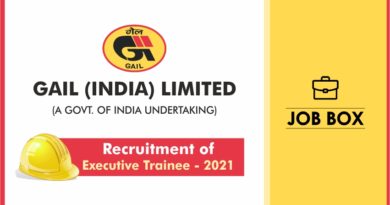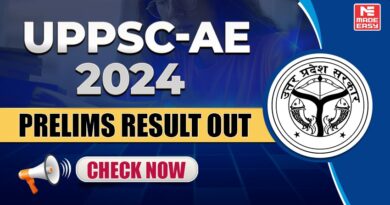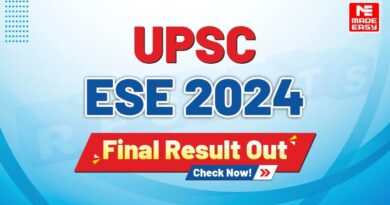Preparation Strategies: Power Electronics
Preparation Strategies: ESE 2025 – Power Electronics
Power Electronics is one of the important core topics that students and professionals from an electrical background cannot skip when it comes to IES preparation. The ESE exam is one of the most sought-after competitive exams among technical graduates. It provides the opportunity for graduates to work within their technical knowledge for the government along with all the facilities, dignity, and career growth that a student or professional seeks in the upcoming times.
To secure the desired marks in the ESE exam in minimal time, it is inevitable that one follows the correct preparation strategy for IES preparation. However, spending a lot of effort and time in the ESE exam preparation for any one subject is a waste of both and must be avoided at all costs. It is always a good idea to strategize and plan your IES preparation before starting it. In lieu of the same lines, we try to present the preparation strategy for Power Electronics in this blog so that aspirants get an idea of what exactly is important from the ESE exam point of view and can plan their studies accordingly.
What is Power Electronics Engineering?
Power electronics engineering is the field of engineering that comprises the study of electrical power from one form to another. A professional who specializes in this field is called power electronics engineer.
What is Power Electronics?
Power electronics is one of the most important branches of electrical engineering that mainly deals with the processing the currents and high voltages to deliver the power required for a series of activities.
Why study Power Electronics?
As a Power electronics engineer, you would be required to deal with the control of high-power applications. This high power needs to be controlled and converted according to the requirements of load with high efficiency. To get an even better idea, consider power electronics devices such as a power generator (turbine), which requires 6 KW of steam input to generate 1 KW of power at the output.
Now, one can imagine the amount of losses that would occur here and how important it is to minimize these losses as a responsible Power engineer when you work for the government. Since renewable energy sources like solar energy and wind energy are the future of power generation, it becomes important to study and learn about the suitable power converters that are used.
This becomes important since the generated power is in one form and the requirement at the grid end in another energy form. To bridge this gap between generating station source and the grid station is the responsibility of a Power Electronics Engineer by using suitable power converters. This can be learned through Power Electronics basics. Thus, apart from studying Power Electronics for GATE and ESE 2025, it becomes important as an Electrical engineer, to learn about all the basics and various applications of the subject.
Applications of Power Electronics:
It finds several applications in various streams of Electrical engineering, some of which have been enlisted here:
- Power electronics is applicable in AC drives and DC drives. With complete knowledge of both, the basics of this subject and Electric machines, one can get a complete understanding of AC drives and DC drives which is nothing but control of various electrical machines.
- To understand several advanced concepts of Electrical engineering such as FACTS (Flexible AC Transmission System), power quality, HVDC, and reactive power control.
- Power electronics also find application in various modern-day technologies. This includes traction, hybrid cars, robotics, aircraft, X-rays, scanning machines, medical laboratories, and telecommunication, where we use power electronic converters.
About Power Electronics:
Power electronics engineers mainly deal with the control, conversion, and conditioning of electric power using semiconductor devices such as switches with high efficiency. Power conversion is necessary to omit the mismatch between available energy from the source and the required energy form. For example, available supply energy may be 230 Volt, 50 Hz, 1-phase or 400 Volt, 50 Hz, 3-phase. Sometimes the energy is stored in solar batteries of 12 V, and 48 V or renewable sources like photo-voltaic solar cells or wind turbines.
On the other hand, the requirement is 1-phase for domestic applications such as bulbs, and fans, or 3-phase loads such as high-power induction motors, pumps, DC motors for variable speed control, integrated circuits, and microprocessor using DC of 15 V, 5 V, 3.3 V, or 1.5 V. In addition, fluctuations in supply voltage needs to be regulated. This is called as conditioning of the power supply. This clearly explains the Power electronics basics required for the IES preparation. Here are the various basics required to learn the subject most efficiently.
Power electronics basics:
Understanding this subject for the ESE exam requires various concepts of a number of other subjects from the ESE Electrical engineering syllabus. Following is a list of the subjects and the important topics from each that might be required:
- Network theory: Knowledge of the Laplace transform and inverse Laplace transform is necessary to solve differential equations while solving numerical questions… Read More>>
- Electric Machines: To get an understanding of the fundamentals of drives, it is advisable to study Electric Machines topics before Power electronics interview questions.
- Signals and systems: To analyze waveforms, a thorough knowledge of the Fourier series is necessary.
- Power systems: Basic concepts of Power systems are required to learn about applications like FACTS, Reactive Power Control, power quality, and HVDC.
- Semiconductor Physics: Basics of semiconductor physics and semiconductor switches help to learn about Power Electronics switches since they are based on semiconductor switches.
- A basic idea of analog electronics, digital signal processing, and microcontrollers may also be helpful for the design of control circuits.
Now, let us learn about some important topics associated with Power Electronics:
1. What is a chopper in power electronics?
Ans: In power electronics, a chopper is a device that is responsible for the direct conversion of the fixed DC input into variable DC output voltage.
2. What is commutation in power electronics?
Ans: Commutation is the process used for turning off a thyristor. A thyristor is a solid-state semiconductor device. It comprises four layers of alternating P-type and N-type materials.
3. What is a converter in power electronics?
Ans. Converters are also known as Power Electronics Converters. As the name suggests, these devices take the electrical energy to convert it into a suitable form that the respective motor needs for its proper functioning. The electrical energy is taken from the chosen power system.
Important topics associated with the Power Electronics and Drives:
- Semiconductor power diodes
- Transistors
- Thyristors
- Triacs
- GTOs
- MOSFETs
- IGBTs – static characteristics and principles of operation
- Triggering circuits
- Phase control rectifiers
- Bridge converters – fully controlled and half-controlled
- Principles of choppers and inverters
- Basic concepts of adjustable speed DC and AC drives
- DC-DC switched mode converters
- DC-AC switched mode converters
- Resonant converters
- High-frequency inductors and transformers
- Power Supplies
Study resources:
When preparing for ESE, one can refer to the best Power Electronics books such as M.H. Rashid for theory and P.S. Bhimbra for the numerical part. It is highly advisable to form one’s notes and short notes from the best Power Electronics books for proper practice, understanding, and revision later.
In case of any doubt or discrepancy, one may refer to the above books for Power Electronics basics. Especially for topics that have high weightage for GATE and ESE 2025 exams, one may go through the questions and solved examples from these books.
Expert-recommended tips:
After planning and strategizing for the ESE exam properly, it is equally necessary to work on the implementation of the plan and preparation strategy for the ESE. Here are some tips included for the same:
- After completion of each chapter, try to revise the concepts given in the classroom or study by yourself on the same day.
- Plan proper revision of the complete subject after completion of the course that clears the fundamentals of power electronics.
- Classroom notes and micro notes, both must be made properly and by oneself to aid proper revision at the end.
- Revise inverters and choppers multiple times as these topics associated with Power Electronics Devices consume less time, are easy to prepare, and carry more weightage.
- Do not fall for unverified sources of study. Apart from the reference books stated, you can refer to MADE ESAY theory book and question banks for practice.
- After serial revisions, it is important to appear for the test series of a good institute like MADE EASY. It includes different levels of questions, which increases understanding of each topic and each concept.
- Topic-wise subject tests help one in identifying one’s weak areas, work on them and compare with different students.
It is easy to concentrate on either speed or accuracy at once, but the ESE exam demands concentration on accuracy in a stipulated time. Practice and joining a good test series can help you achieve both.
We hope this blog helps you with the preparation strategy for Power Electronics for the ESE exam.
All the best for ESE 2025 Exam!
Dear Aspirants,
Your preparation for GATE, ESE, PSUs, and AE/JE is now smarter than ever — thanks to the MADE EASY YouTube channel.
This is not just a channel, but a complete strategy for success, where you get toppers strategies, PYQ–GTQ discussions, current affairs updates, and important job-related information, all delivered by the country’s best teachers and industry experts.
If you also want to stay one step ahead in the race to success, subscribe to MADE EASY on YouTube and stay connected with us on social media.
MADE EASY — where preparation happens with confidence.

MADE EASY is a well-organized institute, complete in all aspects, and provides quality guidance for both written and personality tests. MADE EASY has produced top-ranked students in ESE, GATE, and various public sector exams. The publishing team regularly writes exam-related blogs based on conversations with the faculty, helping students prepare effectively for their exams.



